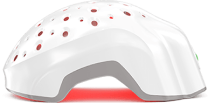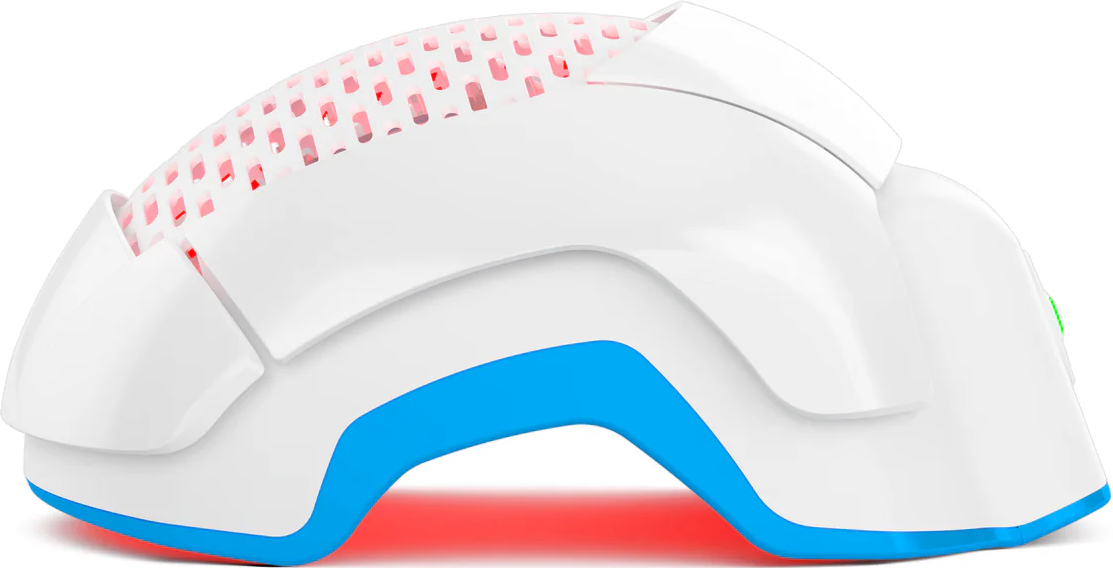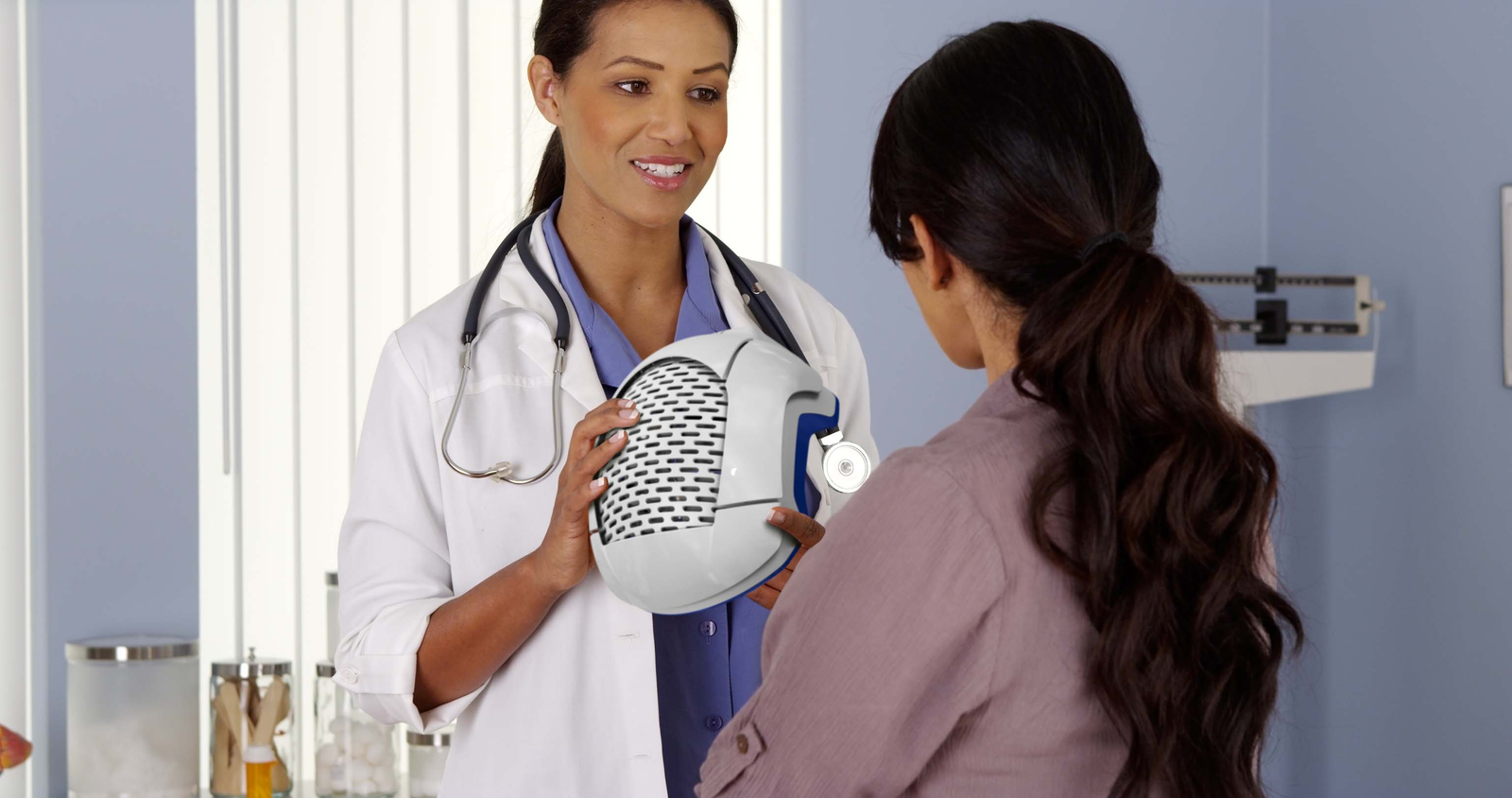The most reliable way to monitor your response to Theradome is via consistent monthly standardized photos, combined with shedding trend counts at home, and periodic clinical measurements (trichoscopy or phototrichogram). Usually, objective changes begin around 16–26 weeks if usage is consistent.
Understanding the Hair Growth Cycle (Foundation for Progress Tracking)
To make sense of “seeing nothing” early on, you need the cycle.
Phases of the cycle (Anagen, Catagen, Telogen)
- Anagen (growth): This is the active phase — hair follicles are producing shafts. Lasts 2 to 6 years (or more), depending on genetics and health.
- Catagen (transition): A short “turnover” stage (1–2 weeks), where follicles shrink and detach.
- Telogen (resting/shedding): The “rest” phase. Hairs linger for ~2–3 months before shedding.
- Because only a fraction of hair is in anagen at any time, visible gains lag behind internal changes.
Normal shedding of 50–100 hairs/day often continues early in treatment. It doesn’t necessarily mean failure.
Proven Ways to Track Your Hair Regrowth with Theradome
You don’t have to guess. Here are five complementary, evidence-backed methods.
Method 1 — Before-and-After Photography
This is your bread and butter at home.
- Use a plain neutral background, fixed lighting (no harsh flash), and consistent camera distance (e.g. ~18 inches).
- Capture front, crown, temples in every session.
- Keep hairstyle, parting, and hair wet/dry state uniform.
- Theradome itself provides photo guidelines (background, angle consistency).
Photos let both you and clinicians visually assess density and pattern changes over time.
Method 2 — Shedding Counts / Hair Pull Test
- The 60-second hair count: place hair over a sink (white towel background), run fingers slowly for 60 seconds, count shed strands.
- Hair “pull test”: gently tug 20–50 hairs from multiple scalp zones; if >5–10 hairs come out per zone, note the trend (see trichogram details).
- Useful for detecting reduced shedding trends. But daily variation (wash days, stress, hormonal flux) means this is best logged over weeks.
Method 3 — Monitoring the Part Line & Crown
- Observe if your part width appears to narrow over months.
- Watch the density around the crown: fuzziness -> fullness.
- These are cosmetic cues you might overlook if you always look in the mirror.
Method 4 — Hair Growth / Tracking Apps
- Some apps use AI to estimate density from photos (Regrow AI, etc.).
- Use them as aids, not truth: they help you digitize your “photo diary,” but are not infallible.
- Always keep original images as backup.
Method 5 — Professional Measurements (Trichoscopy & Phototrichogram)
- Trichoscopy: a non-invasive dermatoscopy of scalp & hair at 10×–70× magnification. Helpful for diameter variation, vellus vs terminal hair count, perifollicular signs.
- Phototrichogram / TrichoScan: combines clipped area + imaging + software to quantify density, hair diameter, and anagen/telogen ratio.
- Best performed every 3–6 months to cross-check your home logs.
Timeline of Theradome Hair Growth Results
Knowing what’s “normal” helps you stay sane.
- Weeks 4–18: Shedding typically declines; you may feel “calmer” scalp, less fallout.
- Weeks 19–26: Notice thicker shafts, baby hairs, improved coverage in weaker areas.
- Beyond 6 months: More robust visible regrowth; patterns may shift.
- 1+ year: Plateaus or maintenance mode. New gains unlikely unless variables shift.
RCTs of LPT devices often use 16–26 weeks as primary evaluation windows.
Some newer 680 nm studies show improved density at similar ranges.
How to Know If It’s Working (Signs of Progress vs. Setbacks)
Positive Signs:
- Fewer hairs in your brush / shower drain.
- Increased fullness or thickness in weaker zones.
- Small “peach fuzz” hairs appearing.
- Visual improvements in photos over months.
Don’t freak out at early shedding: Many studies report transient shedding (telogen shift) in early phases of LPT.
If no change by 6 months (despite adherence), re-evaluate other causes (thyroid, nutritional deficiencies, scalp health).
Diffuse, rapid shedding may point to telogen effluvium rather than therapy failure — seek a clinician.
Best Practices for Accurate Tracking
- Be religiously consistent — same lighting, camera, conditions every session.
- Compare to last photo, not memory.
- Avoid obsessing daily; monthly tracking is optimal.
- Log adherence, diet changes, stress, medications, sleep. Co-factors matter.
- Use a spreadsheet or journal, with photo links next to dates.
Small fluctuations happen. Over the long run, trends matter more than daily variance.
Safety, FDA Clearance, and Scientific Confidence
- Theradome is FDA-cleared.
- It uses Class 3R “cold lasers” (≤ 5 mW per diode) — safe when used as directed.
- Mild AEs reported in LPT trials: transient pruritus, scalp dryness, minimal shedding. Severe events are rare.
- LPT is supported by multiple RCTs and meta-analyses: significant hair density gains over sham devices.
- Limitations: many trials have small sample sizes and short durations; device parameters (wavelength, dose) vary. Interpret results with context.
Staying Motivated and Celebrating Progress
Yes—this is slow. But document the small wins.
Track “micro-victories”: less fallout, thicker feel, new fuzz. Those are real.
Stay in a mindset of “progress, not perfection.”
Use your logs and photos to anchor hope when your eyes deceive you.
Your timeline expectations are realistic — growth isn’t linear.
Community stories or journaling sometimes help more than numbers.
Conclusion
Tracking your Theradome journey isn’t about obsessing over every hair. It’s about creating clarity, maintaining motivation, and giving your clinician real data. Use monthly photos + shedding logs + periodic trichoscopy to see the truth. Be patient. Be consistent. Over time, the changes (subtle at first, then unmistakable) emerge.
Ready to track your journey?
Learn more about Theradome’s FDA-cleared LPT helmets and how best to incorporate tracking tools. Explore the Theradome device today.






















